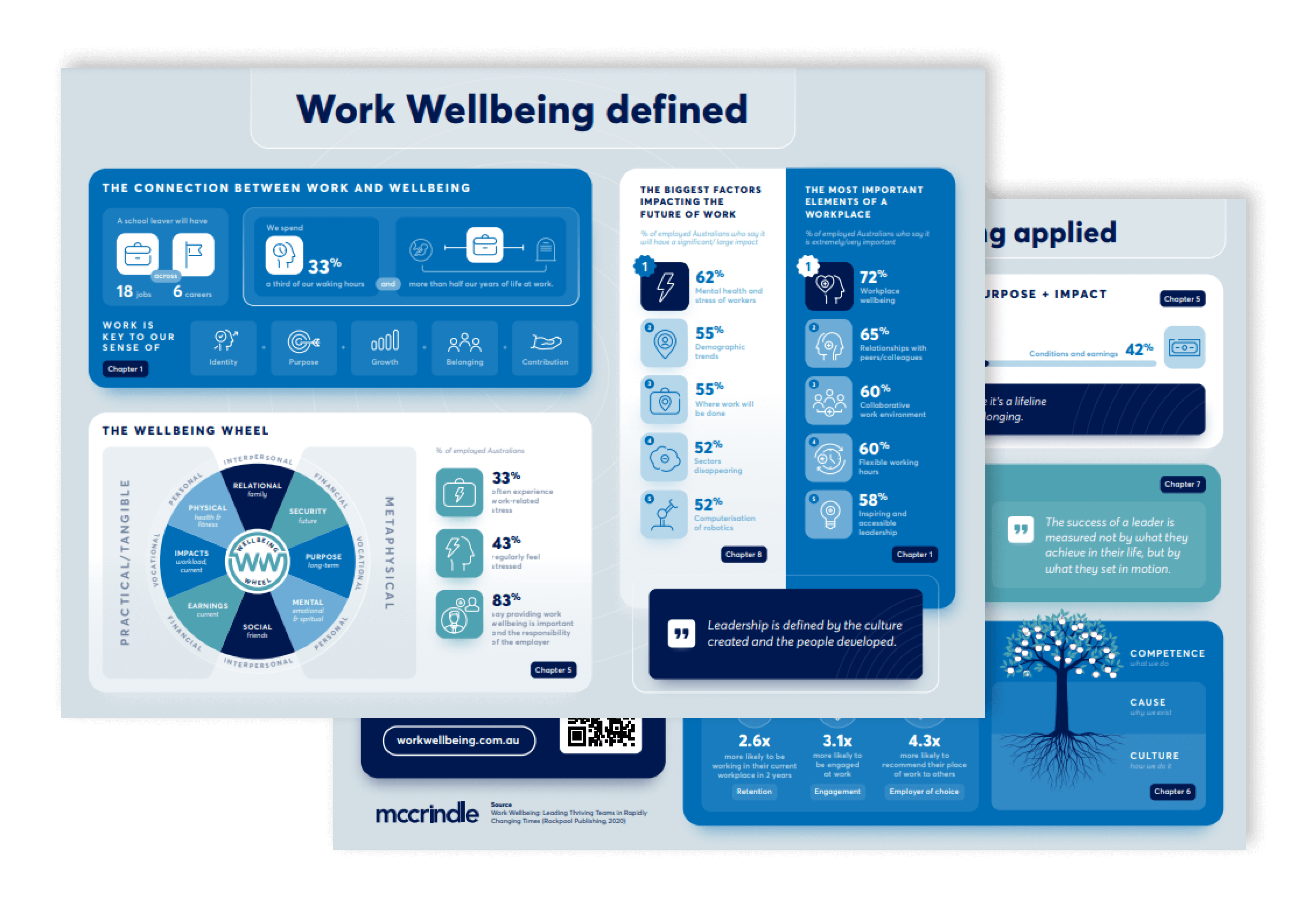Work Wellbeing
The importance of wellbeing in the workplace

The use of the word wellbeing in 21st-century vocabulary and discussion about the subject itself have increased in prevalence, especially over the last few months with rapid change and uncertainty permeating most of 2020.
A simple definition of the term wellbeing is the ‘state of being comfortable, healthy or happy’. Today people place real focus on wellbeing, and it’s not hard to figure out why. Technology and busyness have blurred the lines of private and public; of school and home; of work and rest. It has made it harder for us to switch off, to connect with the physical world around us and to be present.
The World Health Organization defines wellbeing as a ‘state of complete physical, mental and social wellbeing and not merely the absence of disease or infirmity’. It is strongly linked to happiness and life satisfaction. Many people today use the words wellbeing and mental health interchangeably, and that is because they are inextricably linked. If we have good mental health, it contributes to our ability to thrive and flourish in different aspects of our life.
How mental health contributes to wellbeing
The World Health Organization defines mental health in a holistic context as ‘a state of wellbeing in which every individual realises his or her own potential, can cope with the normal stresses of life, can work productively and fruitfully, and is able to make a contribution to her or his community’.
While mental health awareness has been increasing over time, it is also increasing in prevalence, particularly among the emerging generations. This poses significant challenges for our schools, families and communities. The Black Dog Institute Youth Mental Health Report shows around one in four young people aged 15 to 19 meet the criteria for having a probable serious mental illness.
According to our Future of Education Report, in the last five years almost half of parents (48%) have increased their expectations of their child’s school to support wellbeing. More than one in four (27%) have significantly or somewhat increased their expectations.
Our comparison culture and the inability to switch off, combined with other life pressures and stresses affect our mental health and wellbeing. Technology and the rise of the knowledge economy (where many more workers make their contributions by using digital tools rather than mechanised ones) mean we are sitting more and exercising less, and that we are working longer per week and later in life.
Although it is largely undisputed that eating well and getting regular exercise are key to overall health and wellbeing, over time there has been a shift away from viewing ‘health’ as being purely about the physical. Beyond health, the word ‘wellbeing’ also refers to more than just being physically and mentally healthy. The holistic approach to wellbeing encompasses a multitude of different spheres of what makes us human.
Advancements in how we define wellbeing, how often we talk about it and the focus we give to it have seen a rise in strategies at a personal, organisational and institutional level as to how we obtain wellbeing – or, at least, improve it. Meditation and mindfulness are now more accepted and practised, devices that help us track our steps are worn on our wrists
and we’re continually encouraged to be informed of what we feed our bodies. Beyond these positive, personal endeavours there is another element at play in our lives that massively impacts our wellbeing and our ability to thrive – and that is work.
Work Wellbeing
Numerous studies indicate we spend roughly a third of our waking hours at work, which has meant that the focus on wellbeing has now extended to the workplace. So, what is work wellbeing?
A foundational element of work wellbeing is workplace safety. The good news in most developed nations and in most industries is that rates of physical injury in the workplace continue to decline. Through better training, technology solutions and heightened employer and worker vigilance, worksites have never been safer. For many workers, the most dangerous aspect of their job is their daily commute.
At the same time as we have seen safer workplaces physically there has been a growing awareness of the impact of work mentally and emotionally. In our survey of Australian workers, we asked about what trends will most impact the future of work. Of the seven factors we tested, ‘mental health and stress of workers’ was the one most believed would have the most significant impact (62%). Workplace health and safety regimes have robustly turned their attention to mental wellbeing and many organisations have rebranded their workplace health and safety services to wellbeing services.
A growing number of organisations are seeing the value of implementing and encouraging healthy initiatives for their employees. Organisations have realised that having healthy employees’ equals having a healthy organisation. Because wellbeing is more than positive physical and mental health – in its holistic definition wellbeing is about our ability as humans to thrive and flourish – work plays a crucial role in people’s wellbeing. Work is meant to be good for us, and our research has shown that purposeful work has a positive impact and connects us with others. It is core to our wellbeing and our ability to thrive.





